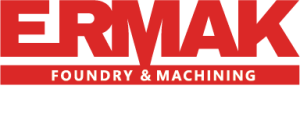A few years ago, we had a customer that had never used aluminum castings but didn’t like “hogging out” (a process of cutting out the center of raw bar stock) that was required to make his part. He thought it might be costing him extra money and at a minimum was causing logistical headaches. The part was already complex with a lot of welding, riveting and assembly that required coordination and extra lead time. His engineers convinced him to switch to an aluminum casting and, long story short, we helped him redesign the part to save ~70% in cost while decreasing lead time by ~50%. It was a perfect storm of when castings make more sense than machining.
So, the question is, when does it make sense for a part to be a casting versus a machined or fabricated part? Identifying complex parts or parts that waste raw materials is an easy first step to determine a good candidate for conversion. Complex parts have two or more pieces that are welded, riveted, fastened, and/or assembled, a few common examples are weldments and fabricated plates. Wasteful parts usually have a single part with excessive machining or is machined from a larger piece of stock that “wastes” the raw material, in the example above a hollowed-out part.

There are additional parts that present opportunities for conversion including pieces where a better appearance is required (one-piece design vs. multiple), customization is desired (a company logo “embossed” on a part), better mechanical parts are needed (where weak spots form from riveting, fabrication, etc.).
The next step in the process is to redesign the part, ensuring all critical elements are met (strength, hardness, lead time, finish, tolerances, cost, etc.). We are happy to help guide this process with a customer’s design engineers or utilize outside firms to ensure parts meet the necessary requirements.
Once those items are known, 3D printing can usually be utilized to produce prototype castings in as little as a few days. These prototypes are “95% accurate” with some minor imperfections of surface finish and quality, but typically allow for part testing to be completed.
With design or prototype castings complete, production tooling and process design is quoted, and parts can be moved into production in a matter of weeks.
See the article KNOWING WHEN TO SWITCH TO CASTING by Shannon Wetzel (Casting Source)
Share your experiences on converting to castings below or reach out to us for how we can help convert your first part! Free quotes and advice, info@ermak.com or (952) 448-2801.
